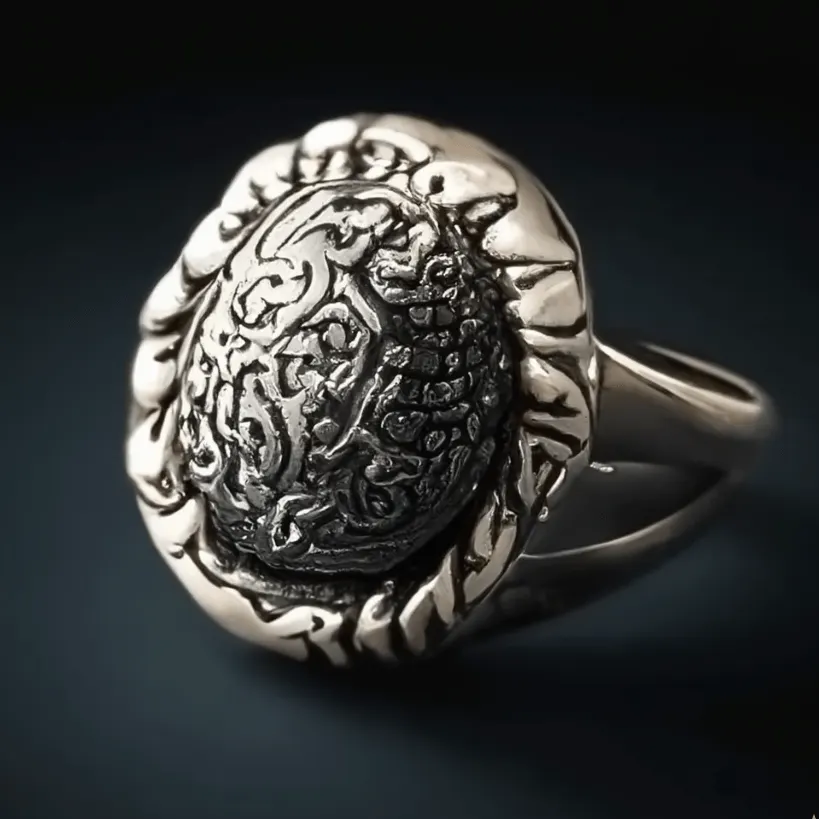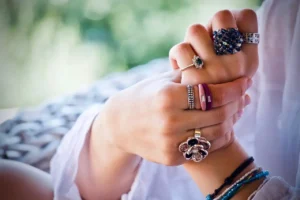
Why Does Silver Tarnish?
Table of Contents

The Science Behind Tarnish
Silver has long been admired for its lustrous beauty and versatile use in jewelry, tableware and decorative items. However, over time, silver can lose its shine and develop a dull, darkened layer known as tarnish. If you’ve ever wondered why silver tarnishes, read on to discover the science behind this natural process and how you can prevent and remove tarnish.
Understanding Oxidation
Tarnish is a thin layer that forms on the surface of silver when it reacts with sulfur-containing compounds in the air. This chemical reaction, known as oxidation, occurs when silver comes into contact with pollutants such as hydrogen sulfide, sulfur dioxide or sulfuric acid present in the atmosphere. Additionally, certain foods, cosmetics and materials like rubber can release sulfur compounds that accelerate the tarnishing process.
The Role of Sulfur
The tarnishing of silver is primarily due to the presence of sulfur, which reacts with the silver to form silver sulfide. Silver sulfide is a dark compound that adheres to the surface of the metal, causing it to lose its shine. The process is gradual and can be accelerated in high-humidity environments or areas with high levels of air pollution.

Preventing Tarnish
Fortunately, there are several measures you can take to prevent silver from tarnishing. Proper storage is essential to minimize exposure to air and moisture. Store silver items in airtight containers or anti-tarnish bags to reduce contact with sulfur-containing compounds. Adding a moisture-absorbing material like silica gel to the storage container can further help in preventing tarnish.
Regular cleaning and maintenance are also crucial in preserving the shine of silver. Gently polish your silver items with a soft, non-abrasive cloth to remove any accumulated tarnish. Avoid using harsh chemicals or abrasive materials that can scratch the surface of the metal. Instead, opt for specialized silver polishing solutions or home remedies like baking soda and water paste to gently restore the shine.
Another preventive measure is to wear silver jewelry frequently. The natural oils produced by your skin can help create a protective barrier that slows down the tarnishing process. However, be cautious if you engage in activities that involve contact with chemicals as they can accelerate tarnishing. Remove your silver jewelry before swimming, applying lotions or perfumes or engaging in household chores.
Removing Tarnish
In addition to prevention, there are various methods to remove tarnish from silver. One popular technique is using silver cleaning dips or solutions, which contain chemicals that dissolve the tarnish layer. However, exercise caution and follow the instructions carefully to avoid damaging the silver or any gemstones that may be present.
For more delicate silver items or antique pieces, it is advisable to seek professional cleaning or restoration services. Professional jewelers and silverware experts have the knowledge and experience to handle such items with care and restore them to their former glory.
Check our guide to preserve your silver jewelry
Conclusion
Silver tarnishes due to the reaction of the metal with sulfur-containing compounds in the air, resulting in the formation of silver sulfide. The process is influenced by factors like humidity, air pollution and exposure to sulfur-releasing substances. By adopting proper storage techniques, regular cleaning and preventive measures, you can minimize tarnish and enjoy the timeless beauty of your silver possessions for years to come. Remember to consult professionals when dealing with delicate or valuable silver items to ensure their preservation and restoration.



